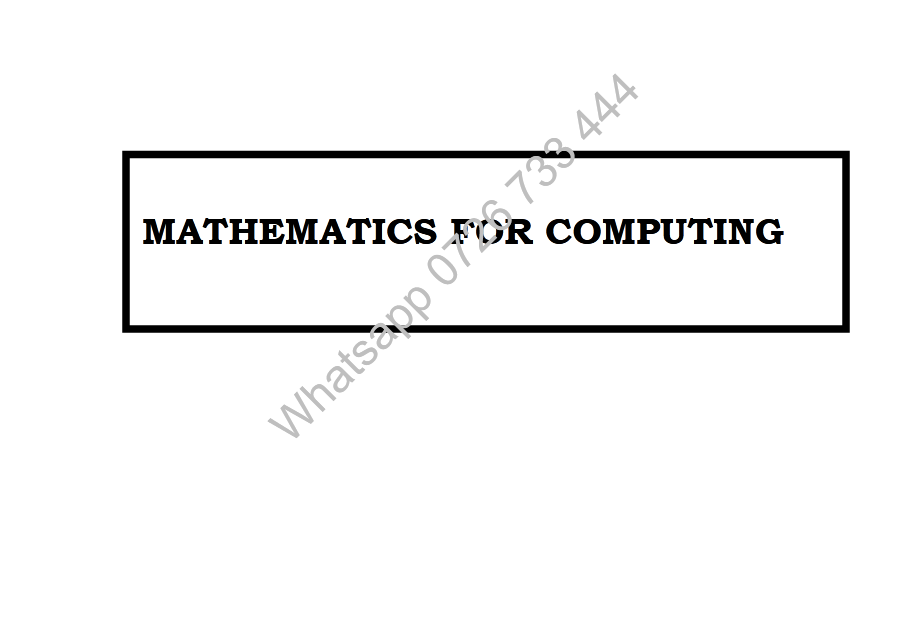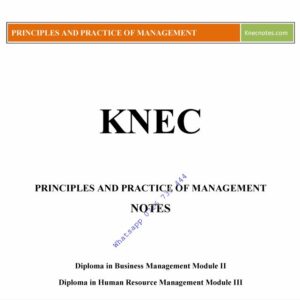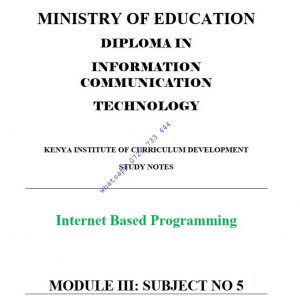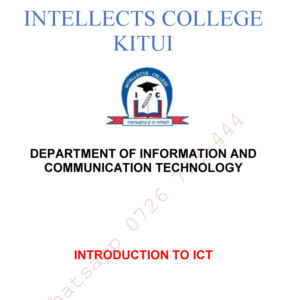Description
CHAPTER 1: NUMBER BASES
1.1 Introduction
1.2 Level of Precisions
1.3 Number Base
1.4 Column System
1.5 Conversion from Other Bases to Denary
1.6 Conversion from Denary to Other Bases
1.7 Conversion Among Other Base
1.8 Real Number
1.9 Octal Arithmetic
1.10 Hexadecimal Arithmetic
1.11 Modular Arithmetic
1.12 Past Years Questions
CHAPTER 2: COMPUTER BASED ARITHMETIC
2.1 Binary Addition
2.2 Binary Subtraction
2.3 Binary Multiplication
2.4 Binary Division
2.5 Number Storage in the Computer Word
2.6 Storage of Numbers
2.7 Storage of Fractions
2.8 Storage of Mixed Numbers
2.9 Storage of Number Using 2’s Complement Method
2.10 Ten’s Complement
2.11 Two’s Complement
2.12 Recomplementing Cases
2.13 Shift Operations
2.14 Past Years Questions
CHAPTER 3: FLOATING POINT REPRESENTATION
3.1 Introduction
3.2 Fixed Point and Floating Point Binary
3.3 Floating Point Storage
3.4 Floating Point Storage
3.5 Floating Point Notation
3.6 Normalised Floating Point Form (Decimal)
3.7 Normalised Exponent Exponent Form (Binary)
3.8 Storing Negative Mantissa
3.9 Storing Negative Exponent
3.10 Exercises
3.11 Past Years Questions
CHAPTER 4: SET NOTATION REPRESENTATION AND PROBABILITY
4.1 Introduction
4.2 Definition of Set
4.3 Notation
4.4 Venn Diagrams
4.5 Relation Between Sets
4.6 Properties
4.7 Applications
4.8 Other Logical Relation
4.9 Past Years Questions (Set Theory and Venn Diagram)
CHAPTER 5: BOOLEAN ALGEBRA (I)
5.1 Introduction
5.2 Logic Programming
5.3 Logic and Hardware
5.4 Language and Symbols
5.5 Truth Tables
5.6 Logical Equivalence
5.7 Switching Diagrams
5.8 Combining Logic Gates
5.9 The Algebra of Logic
CHAPTER 6: BOOLEAN ALGEBRA (II)
6.1 Introduction
6.2 The Laws of Boolean Algebra
6.3 Simplification of Expressions
6.4 De Morgan’s Laws
6.5 Past Years Questions
CHAPTER 7: DATA STRUCTURES (I)
7.1 Introduction
7.2 The Concept of Unit Matrix
7.3 Arrays and Spreadsheets
7.4 Lists
7.5 Linked List
7.6 Queues
7.7 Stacks
CHAPTER 8: DATA STRUCTURES (II)
8.1 Introduction
8.2 Tree
8.3 Tables
8.4 Binary Trees
8.5 Traversing of Binary Trees
8.6 Binary Search Tree
8.7 Searching and Inserting in Binary Search Trees
8.8 Past Years Questions
CHAPTER 9: MATRIX AND TRANSFORMATION
9.1 Introduction
9.2 Definitions
9.3 Rules/Matrix Algebra
9.4 Equivalent Matrices
9.5 Transformations
CHAPTER 10: REPRESENTATION OF INSTRUCTION
10.1 Introduction
10.2 Construction of an Instruction Word
10.3 Instruction Word Formats
10.4 Representation of Instruction and Data
10.5 Addressing Techniques
10.6 Instruction Types
10.7 Exercises
CHAPTER 11: ERRORS AND ACCURACY
11.1 Introduction
11.2 Mistakes
11.3 Errors
11.4 Measurement of Error
11.5 Error Propagation
11.6 To Control Errors
11.7 Past year Questions
CHAPTER 12: STATISTICS
12.1 Introduction
12.2 Raw Data
12.3 Grouped data
12.4 Presentation of Statistical Data
12.5 Three Statistical quantities Of Central Tendency
12.6 Dispersion and Variation
12.7 Past year Questions






AREMAN SOSPETER –
its good notes
MOSES NGALA –
Computational mathematics
titus Kiprotich –
I am a student from EAVI of science and technology